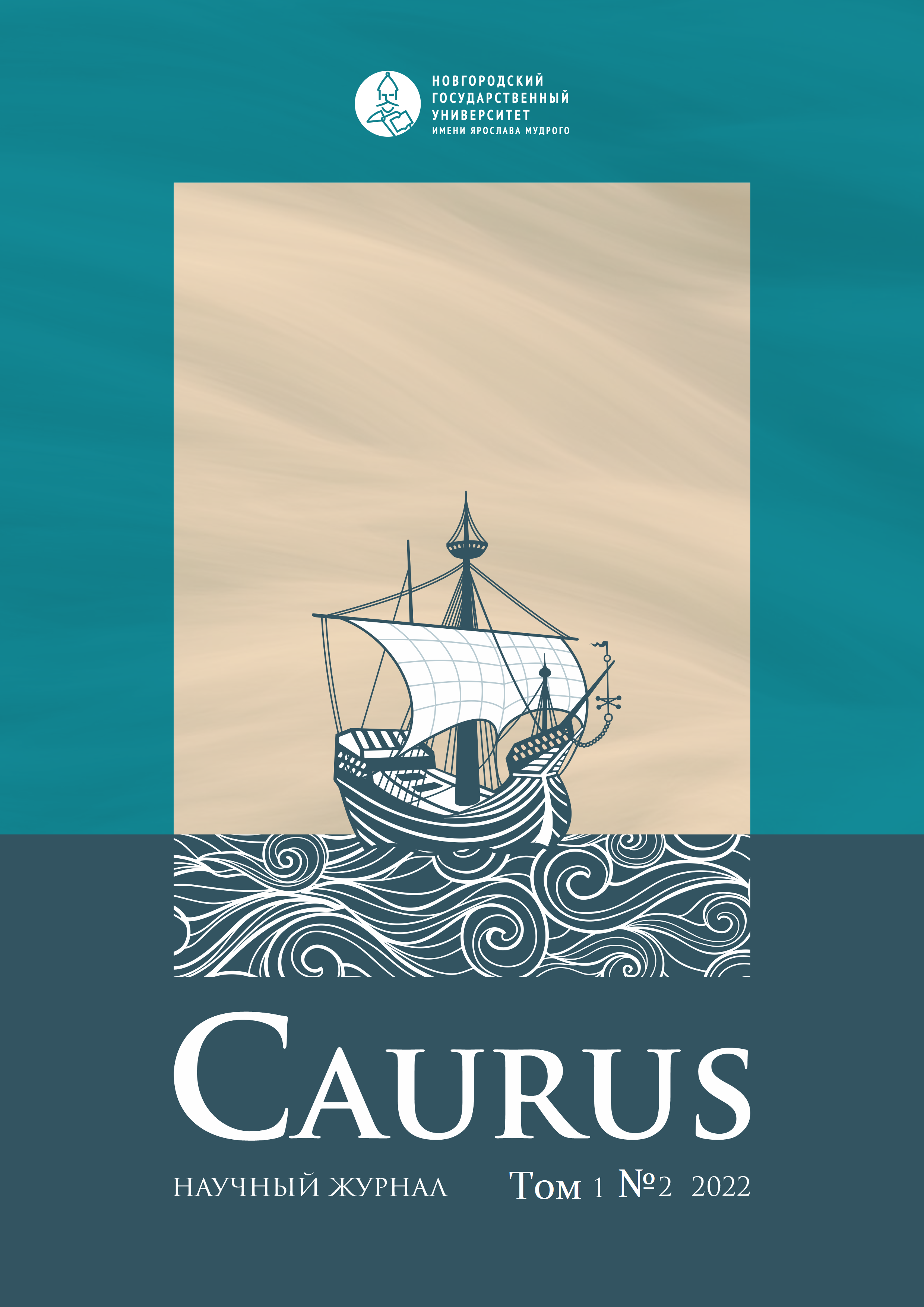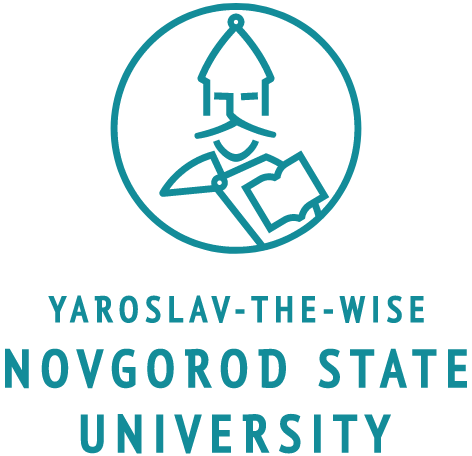From Editor-in-Chief
Abstract
Dear readers!
We offer you the second issue of the scientific journal “Caurus”. The periodical is aimed at highlighting the whole variety of international contacts of the Russian North-West of the pre-industrial era in the format of historical and interdisciplinary research. Constructing an image of the past in the mind of any nation is an organic part of its existence, since in the absence of a deep intellectual understanding of history, it does not have the opportunity to come to an awareness of its own identity and the deep nature of its roots. Such an important task predetermines a special tonality in the descriptions of historical events from a tilt towards politically motivated tendentiousness, producing numerous and sometimes very stable historiographic clichés, and up to, in the best case, the discursiveness of historical problems.
In view of this, the editors of the journal believe that the improvement of the cognitive strategy in the field of historical research is largely predetermined by the expansion of the circle of researchers of the declared subject, who, I would like to believe, will find a link connecting them in this journal, by the fact that they have the opportunity to publish the results of their scientific work and exchange opinions, as well as by the continuous accumulation of historical facts, by the originality of their scientific interpretation, the depth of study of the problems associated with them and, of course, by the introduction of new documentary written evidence into scientific circulation. The publications that the reader can find in the pages of the second issue of the “Caurus” journal align with such attitudes.
The issue opens with the article by V.V. Penskoy (Belgorod) “"Where there is a tiun, there is a prince ...": power and society in early modern Russia (casus of Prince I.V. Lyko Obolensky)”, which presents an analysis of the moralizing text “Punishment” (Nakazaniye) from the ancient Russian legal collection “Measure of righteousness” (Merilo Pravednoye) of the end of the 14th century. The precedent with the reduction of Ivan Lyko Obolensky from the post of governor of Velikiye Luki in the Novgorod land in 1479 by the Grand Duke of Moscow Ivan III due to the petition of the inhabitants of the city is considered by the author in the context of the global problem of the nature of Moscow (Russian) statehood in the modern period including, in particular, extremely limited institutional foundation and the crucial importance of maintaining the authority of the power of the Grand Duke within the land, who suffered from the abuses of the officials appointed by him.
The work carried out by M.B. Bessudnova and D.I. Veber (Veliky Novgorod) in the archives of St. Petersburg is demonstrated in the article “Continuing the story of Magnus of Holstein: documents from the “Livonian Chronicles” in the archive of St. Petersburg Institute of History of the Russian Academy of Sciences”, which presents separate documentary evidence of the life of the Danish Prince Magnus of Holstein as a vassal (“goldovnik”) of Ivan IV and the king of Livonia. The authors give a description of his correspondence from the “Livonian Chronicles” stored in the archives of St. Petersburg Institute of History of the Russian Academy of Sciences with a focus on its origin and content. This article is considered by them as a preparatory stage for the publication of translations of documents related to the history of the first and only Livonian king from this archive collection.
The results of archival research by T.D. Medvedeva (Veliky Novgorod) and her article “Livonian Historiography of the 17th century and Swedish Gothicism: The Lode-Werner Chronicle” contain both a source-based and historiographical aspects. They represent a little-known and hitherto unpublished chronicle of the beginning of the 17th century, written by the Livonian scholars G. Lode and D. Werner. A detailed description of this work, which tells about the history of Old Livonia, allows us to note at least two important points regarding, firstly, its purely pragmatic background, designed to historically justify the privileges of the Estonian knighthood in the Swedish Baltic states, and, secondly, the well-known originality, due to chroniclers' references to Swedish and Danish sources, as well as the use of the concept of Swedish Gothicism.
The article “Baltic aspects of the continental politics of England and the Netherlands at the turn of the 17th–18th centuries” by K.S. Desyatskov (Veliky Novgorod) touches upon the problem of the Baltic aspect of the policy of William III of Orange in the context of the Westphalian sovereignty crisis, Swedish expansion in the Baltic region and the maturing Europe major coalition conflicts in Europe, namely the Great Northern War and the War of the Spanish Succession. Using materials from domestic archives, the author demonstrates the flexible policy of William III of Orange, aimed at maintaining the balance of power in the Baltic region mainly by peaceful means, which, however, did not exclude the presence of the English strategy of stimulating conflicts of third parties. In this regard, examples of the so-called personal British diplomacy aimed at inciting a military conflict between Russia and Sweden, a likely ally of France in the War of Spanish Succession, are given.
M.M. Safonov (St. Petersburg) in the article “The Polish-Lithuanian Commonwealth in the context of the Interregnum” on the basis of a wide range of sources and literature actualizes the problem of the liberal plans of Emperor Alexander I regarding the expansion of the territory of the Kingdom of Poland with the use of Russian lands and strengthening its autonomy in order to enhance the borders of Russia, which led Alexander to another conflict with the Russian nobility. The author also notes the influence of the Polish question on the abolition of serfdom in the Baltic states, the development of the Decembrist movement, the problem of succession to the throne, relations in the imperial family and considers it as one of the prerequisites for the Interregnum.
The article “Integration of the third star. Francis Kemps and the fate of Latgale in 1917–1920” by T. Plath (Greifswald, Germany) deals with the problem of integration of the Latgale region into the Republic of Latvia in the period between the two world wars. Paying attention to the lack of an unambiguous position on the national issue among the politicians of Latgale, the author refers to the characteristics of the activities and views of the Latgale politician Francis Kemps as a supporter of Latgale autonomy, who played a key role in the development of Latgalian political culture and was defeated in confronting opponents. The author focuses on the change in the views of F. Kemps on the political fate of Latgale in the period from 1917 to the end of the 30s of the 20th century, which is presented in the context of the result of the initial plurality of decisions on this fate in the post-revolutionary period.
The subject of the study by D.A. Bessudnov (St. Petersburg), the author of the article “At the origins of Polish patronage: the transfer of the imperial “conservatory” in relation to the Archbishopric of Riga in 1366”, is the prehistory of the Jagiellonian patronage in relation to the Archbishopric of Riga, which they used to include a part of Livonia into their possessions during the Livonian War. The author traces the origin of this important lever in the foreign policy of the Polish-Lithuanian Jagiellons to the imperial prerogative of the “conservatory”, delegated by Emperor Charles IV of Luxembourg to several European sovereigns, including the Polish king, by the rescript of 1366. The article contains a translation and comments of this document, which allows us to imagine the nature of such a little-studied phenomenon as the Polish-Lithuanian patronage.
In the “Chronicle” section, the reader will find an essay by N.V. Salonikov (Veliky Novgorod) "The Fifth Leichoudes Studies in Veliky Novgorod", dedicated to the All-Russian forum with international participation on the history of written culture in Russia and the origins of the formation of Russian higher education, which took place on April 14–15, 2022 at the Institute of Humanities of Yaroslav-the-Wise Novgorod State University. At the conference, 25 reports were presented by scientists from academic institutions, universities, archives, and libraries of Moscow, St. Petersburg, Veliky Novgorod, Yekaterinburg, Novosibirsk, Saratov, Belgrade, and Vienna. Most of the reports were devoted to the traditions of education in Russia, Western and Central Europe from the Middle Ages to the Contemporary Era. Particular attention at the conference was paid to the work and activities of the brothers Ioannikius and Sofroniy Likhudov and their students, the history of the educational institutions they created in Moscow and Novgorod. An important place in the conference program was occupied by reports on the history of books and libraries.
In continuation of the topic of scientific and educational events held by the Department of World History and International Relations of the Novgorod State University, the head of the department V.V. Grokhotova presents the work of the Scientific and Practical Summer School “Novgorod in the system of Hanseatic relations in the Middle Ages”, which was held from June 26 to July 3 at the Institute of Humanities of Novgorod State University as part of the implementation of the program "The Hanse Phenomenon" of the university-wide strategic project "University as a generator of cultural identity". The summer Hanseatic schools at Novgorod State University has been carried out regularly over the past three years. The program of the event in 2022 included extensive lecture, practice, and excursion parts. In total, 24 undergraduate and graduate students from Veliky Novgorod, Moscow, St. Petersburg, Pskov, and Lipetsk took part in the school. A high scientific and practical level of teaching was provided by 17 lecturers/speakers from Veliky Novgorod, St. Petersburg, Pskov, and Stockholm.
The editors of the journal publish it twice a year and provide readers with free access to the full texts of all articles on the official website of the journal (https://journal-caurus.ru).
M. B. Bessudnova







